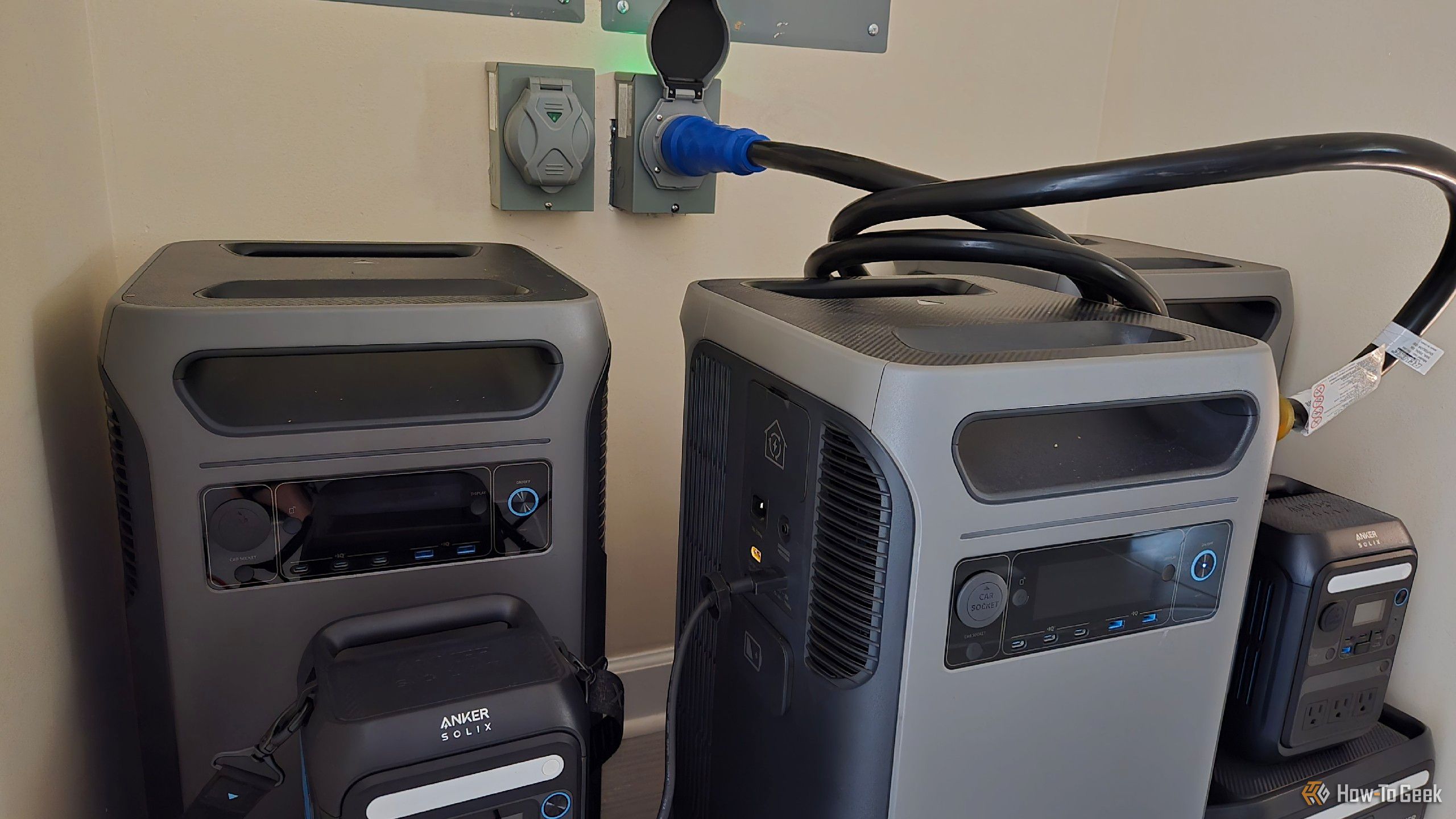I love portable power stations so much that my wife and I have backed up our home with Anker SOLIX batteries instead of an automatic gas generator or a built-in home battery. Here's what I've learned after having just experienced three power outages in the span of two weeks.
Unfortunately, right now I'm the only one in our family who understands how to plug our Anker SOLIX F3800's into the generator inlets in the wall, turn off all the home breakers, cut the power from the grid, and then enable just the breakers we want. The 200A breaker cutting off grid power is so difficult to flip, I don't even know if my wife can manage it. It's given me and prior electricians alike a hard time.
Plus, the F3800 weighs only a dozen pounds less than I do. Even the thick 25A and 50A cables we have for connecting the generator to the home are unwieldy.
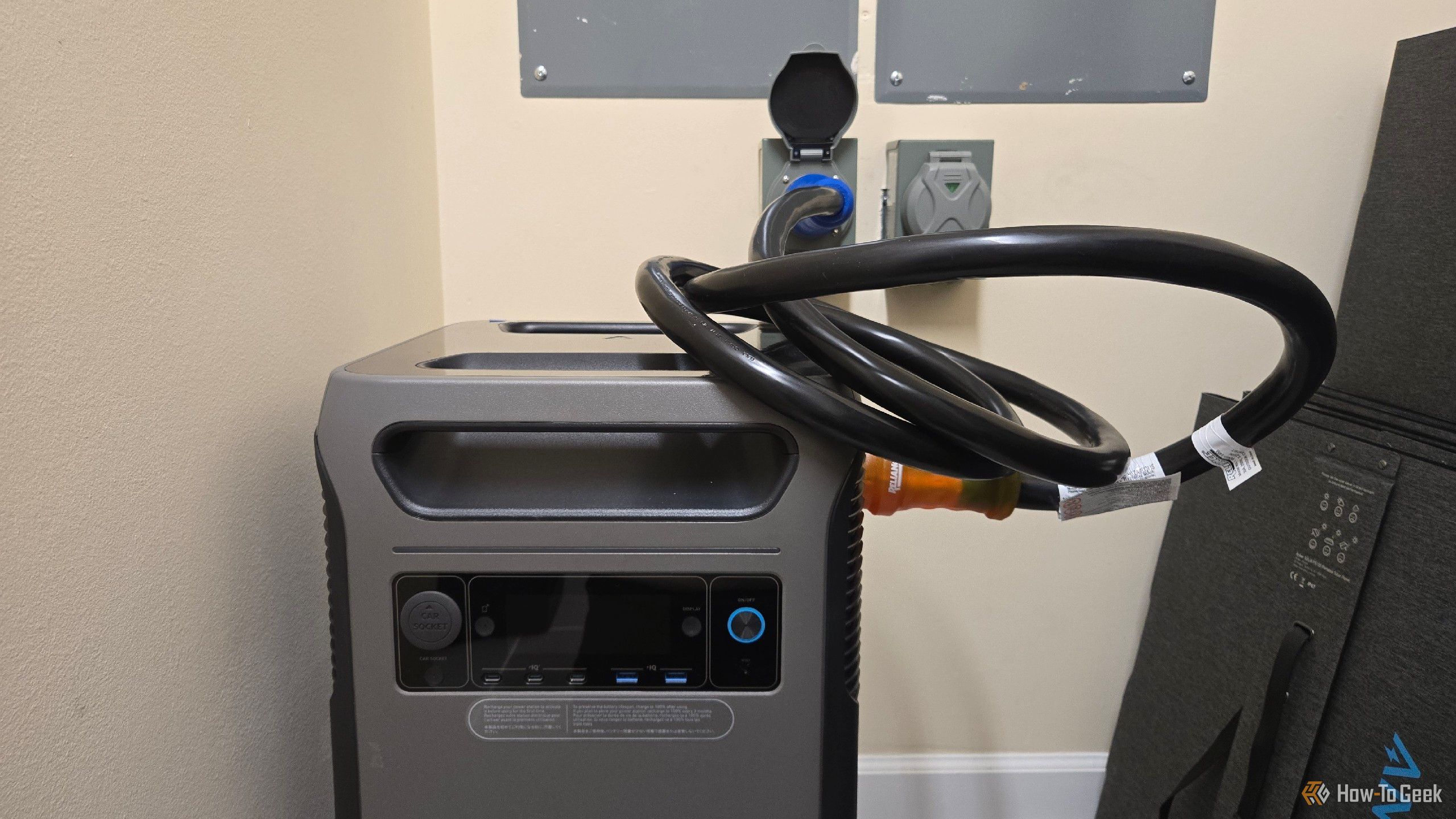
To be clear, this is easier for my family to learn than firing up a portable gas generator, and it's less hassle than rolling in extension cords from outside—but it's not the convenience of an automatic whole-home gas generator. If money were no object, we could have bought Anker's automatic transfer switch as well, but that would have cost us a few thousand more to purchase and install in our home, which has not one but two main breaker boxes.
2 One Anker SOLIX F3800 Can Last Most Outages
One F3800 battery can't power everything for 24 hours, but most of our power outages don't last that long. Even when the power goes out in the morning and comes on in the evening, we're often talking about a time period of eight hours or less. One F3800 can power our fridge, internet, well pump, septic, a few lights, and a ceiling fan long enough for the power to come back on.
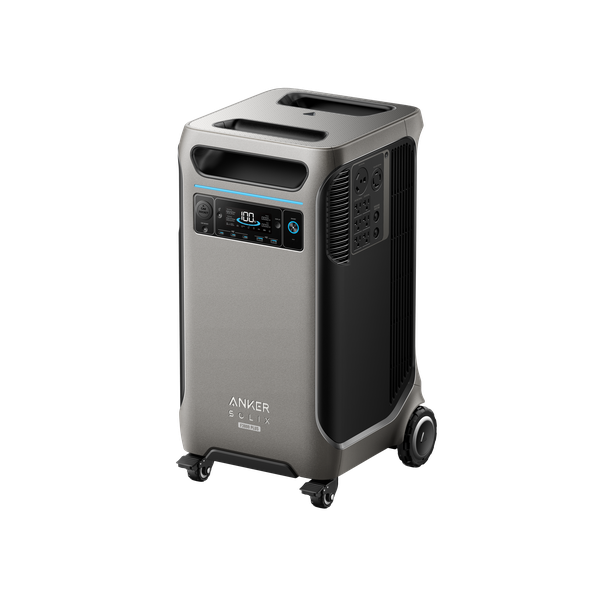
Anker SOLIX F3800 Plus
- Brand
- Anker
- Dimensions
- 27.6x10.3x15.6
- Weight
- 136.7lb/62kg
- AC Output ports
- One NEMA TT-30R, One NEMA L14-30R, Six NEMA 5-20R
Most homes with just one breaker box would not need to invest as much as we did. Since our home has two, with important loads split awkwardly between them, all our costs are doubled. With our well pump requiring a 32A breaker and our septic taking up four separate 16A breakers, we have to allocate quite a bit of power just to keep the water running.
Thankfully, the loads on our second panel are much lighter, and an F3800 can power that one for over 24 hours just fine.
3 With Solar Panels, the Battery Doesn't Drain
None of these recent power outages were the result of a hurricane or large winter storm, so I knew our power would likely be on by the end of the day. Still, since it's good to test out emergency equipment before you actually need it, I pulled out my portable panels and set them up in the driveway.
With a couple 400W panels plugged in, our F3800 pretty much broke even. It brought power in at roughly the same rate as power went out. That meant that during the sunlight hours, we weren't draining the battery. Hooking up a third panel even meant we were slowly recharging.
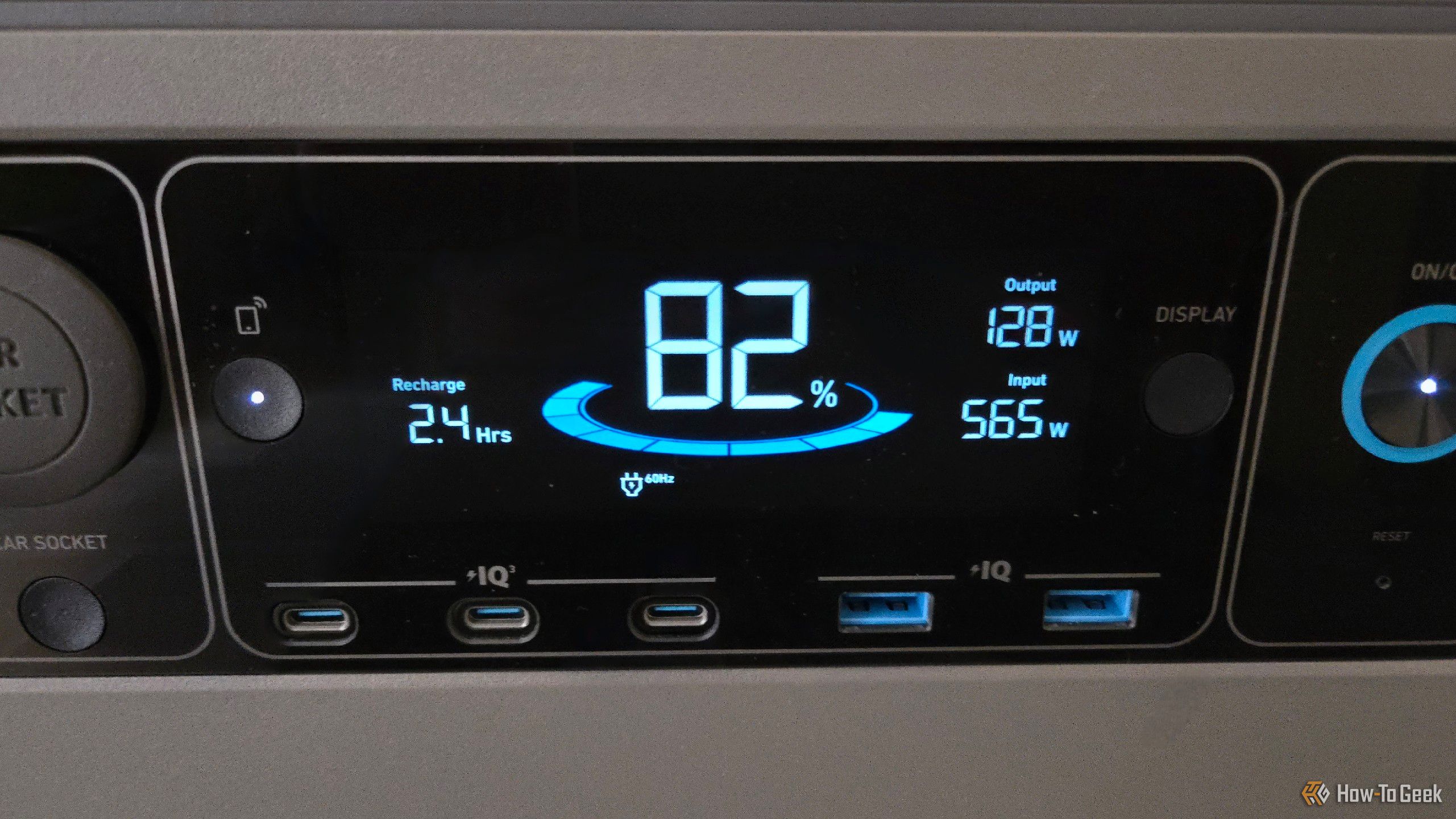
If this were a more serious outage, I would probably have plugged in a fourth just to recoup as much power as possible. The system can handle up to six.
4 Having Multiple Batteries Helps Us Manage Loads
I don't attempt to do everything from our F3800's alone. I reserve those for things that don't plug into a wall outlet (the fridge being a notable, heavy exception).
We purchased several Anker SOLIX C1000's that we use for cooking. Plugging in an induction burner and making a meal was no problem at all.
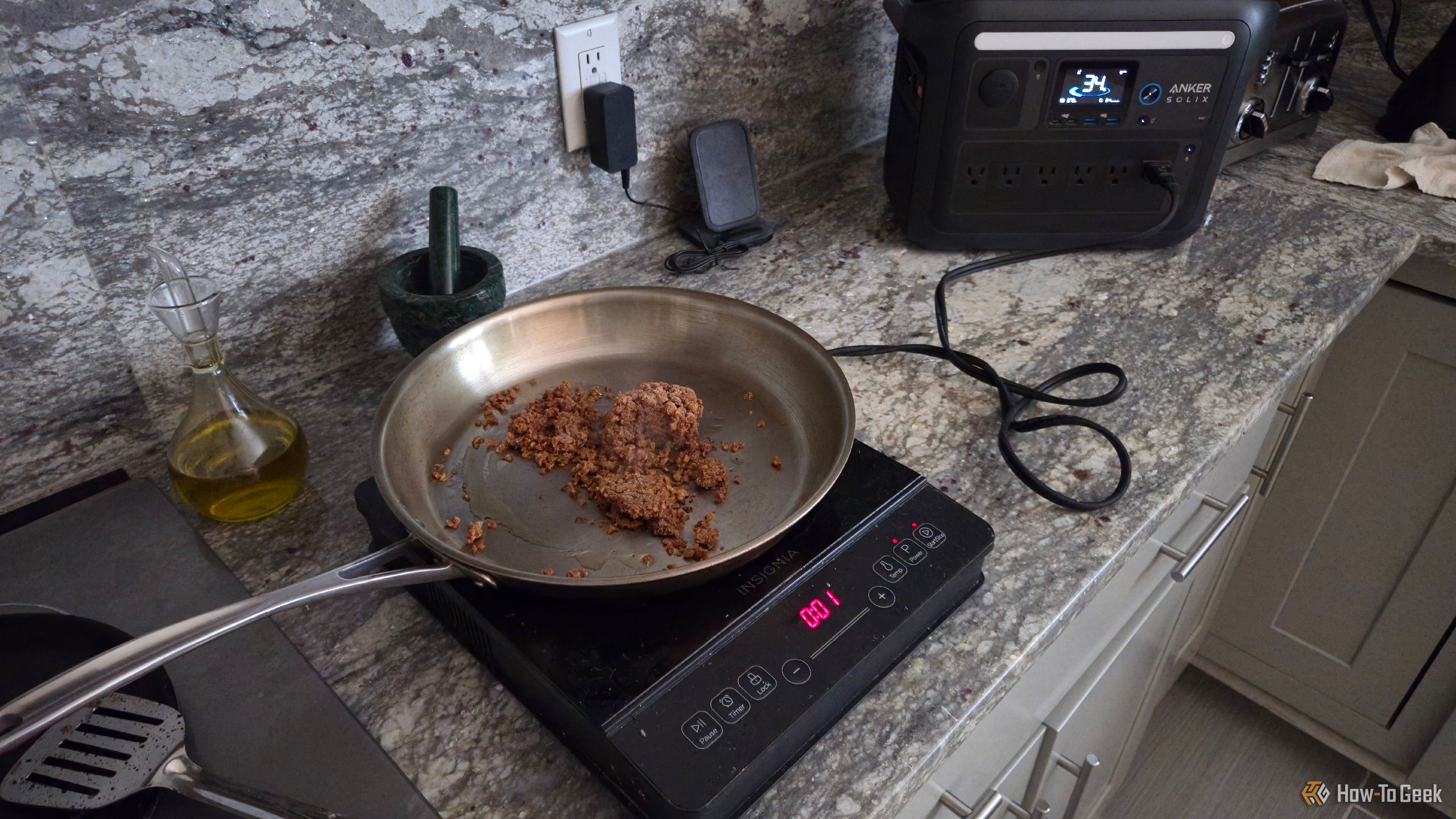
I also plugged in a kettle to boil hot water for bathing (since powering a hot water heater is a pretty intensive task). These tasks take up so little power relative to how quickly these batteries can charge in the sun that I happily use them for luxuries as well, such as powering the TV long enough for the kids to watch a movie or play a game. One Anker SOLIX C1000 can power our media center for over six hours. It's these smaller batteries that enable us to increase how long our F3800s last, since the latter only have to focus on the more predictable background loads.
5 Having Redundant Power Stations Makes Power Feel Abundant
We have nine power stations all together: two F3800's, an F3800 Plus I was provided to review (after we had already bought the other two), three Anker SOLIX C1000's, and three Anker SOLIX C300's. We figured, rather than dump all of that money into a single home battery, which is expensive to install and provides a single point of failure, why not split that one battery into many? Once added up, this is around 15kW of battery storage.
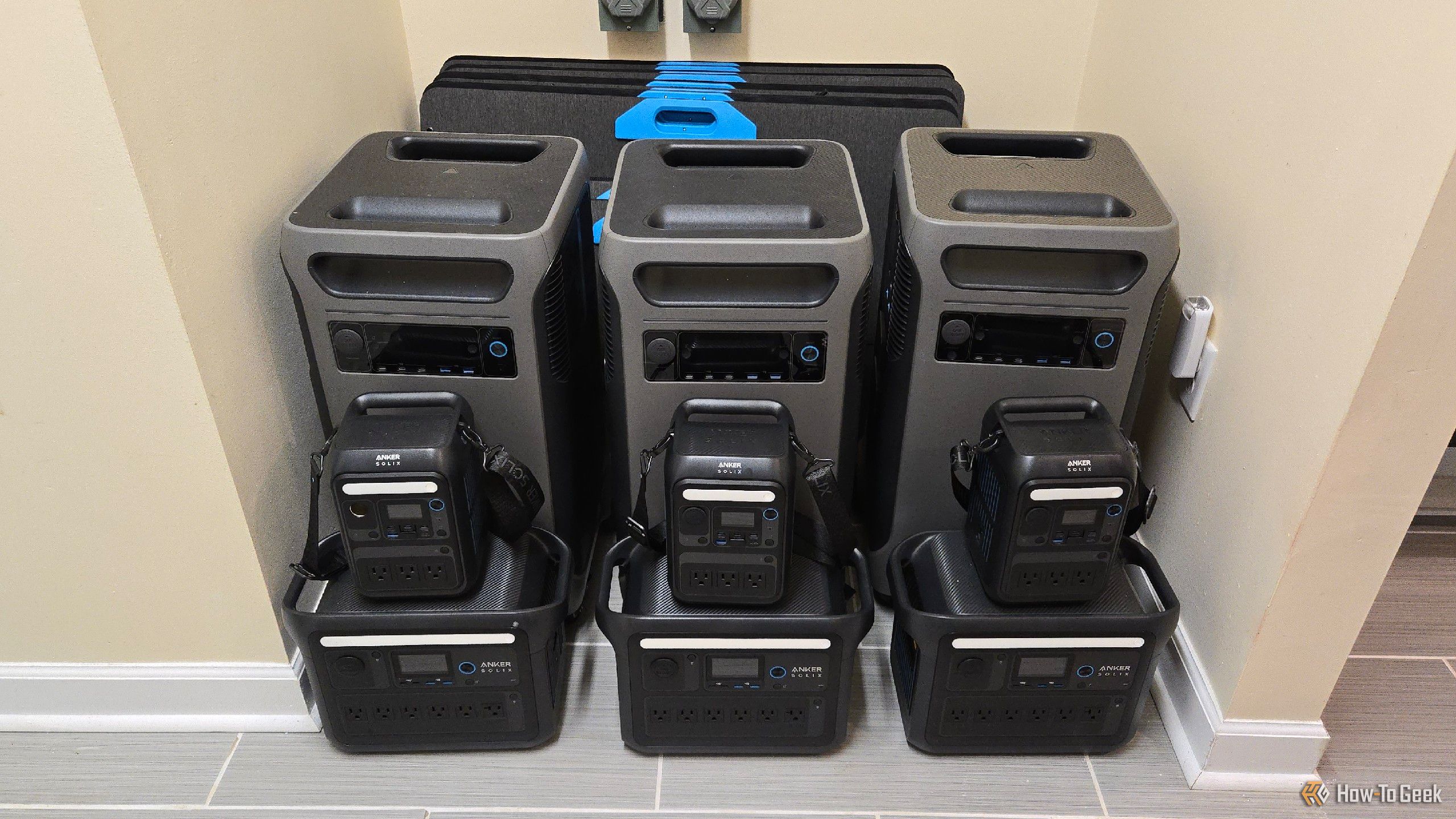
The likelihood of draining all nine batteries is very low. Powering devices like phones, tablets, laptops, and gaming handhelds is a non-issue. We can charge those using our smallest batteries several times over, then toss that battery out to recharge in a few hours of sun. But an outage has to be particularly long before we even get that far, because we first plug those portable devices into the even smaller battery banks we keep around the house and already use on a day-to-day basis.

Why I Leave Phone Power Banks In Every Room of My Home
Portable power isn't just for when you're out and about.
6 Large Portable Solar Panels Are a Pain
I bought each of our F3800s as a bundle that included two 400W panels, since these power stations are always on sale in one form or another. I figured 400W panels had to be twice as good as 200W ones. Turns out, yes and no.
400W panels are heavy and a pain to unfold. I much prefer working with our 200W ones, of which I only have two. If we had more, I'd more quickly reach for several of those during short outages, even if I knew I could be charging faster with the heavy ones.
I'm fond of the 100W panel for this reason, even though I only really use it with the C300.
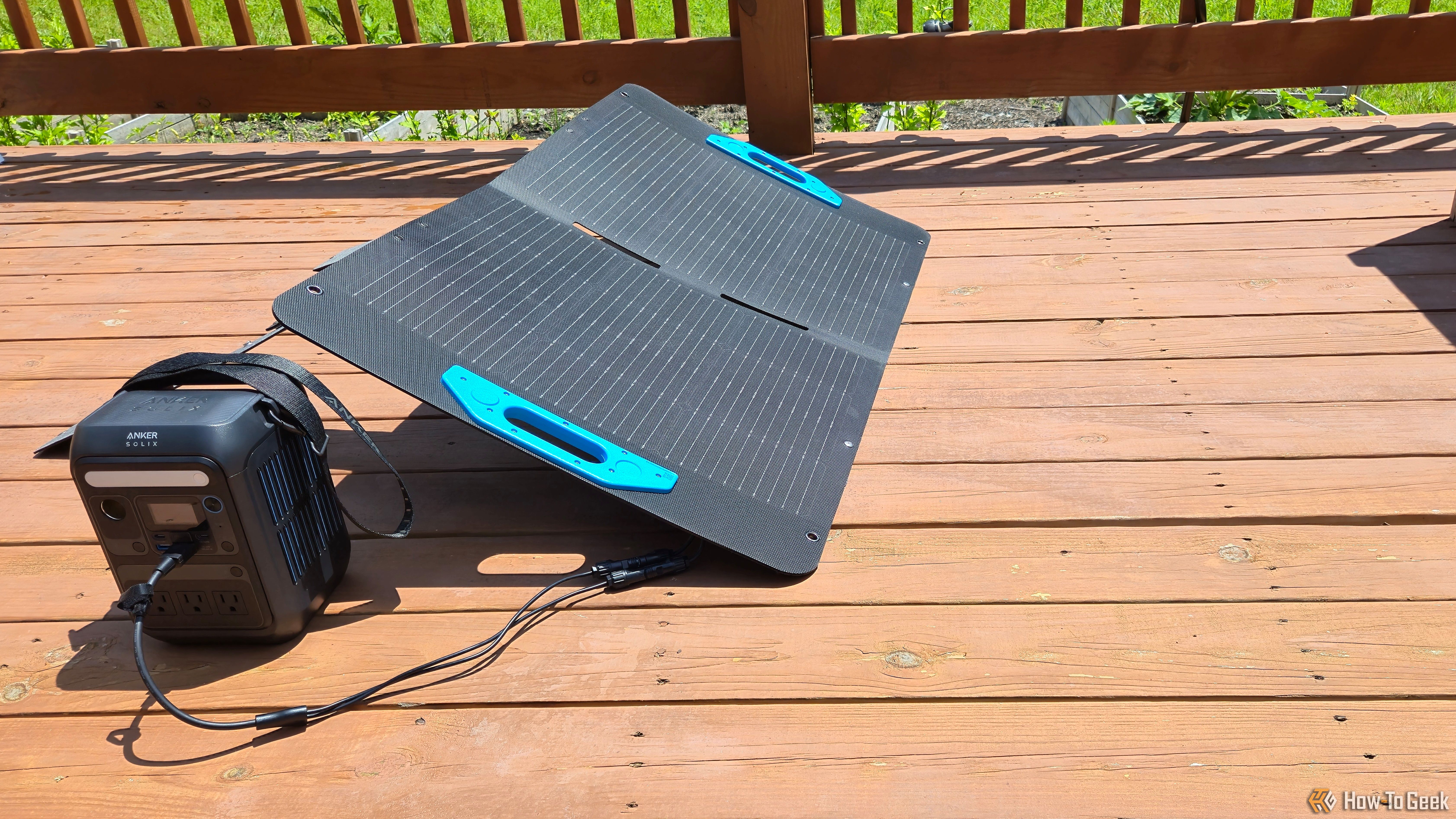
7 Solar Panel Extension Cables Are a Must
The Anker SOLIX C300 and C1000 are small and light enough that I can toss them on the back porch with a portable panel and call it a day. The Anker F3800 is not. Even just rolling one out of the pantry (where our breakers are) is a hassle.
Thankfully, there are extension cords for solar panels. I bought a pair of 60-ft cables from Windy Nation. This allows me to set up panels in the driveway and run power to the F3800's connected to the house inside.
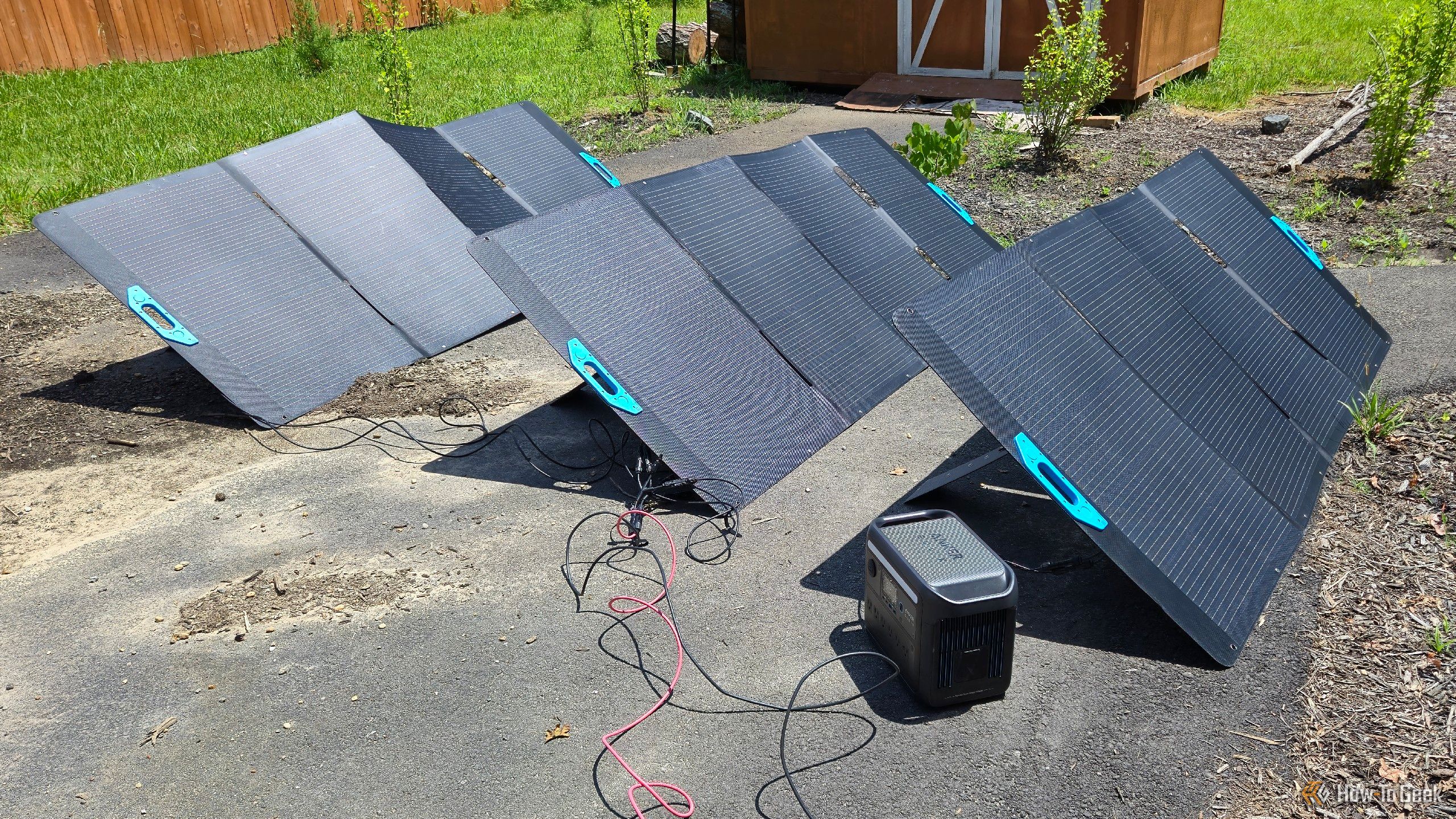
This is a fundamentally different way to navigate power outages than the options I grew up with, where batteries and gas alike were scarce resources. Now we know we can weather outages indefinitely, and the outage won't cost us any extra money no matter how long it lasts. These batteries also require zero maintenance and provide layers of redundancy. After all, there are several other ways to recharge these batteries that aren't dependent on the sun. To name just one: I've purchased a Renology pure sine wave inverter so that I can recharge these power stations using the massive battery in my EV.
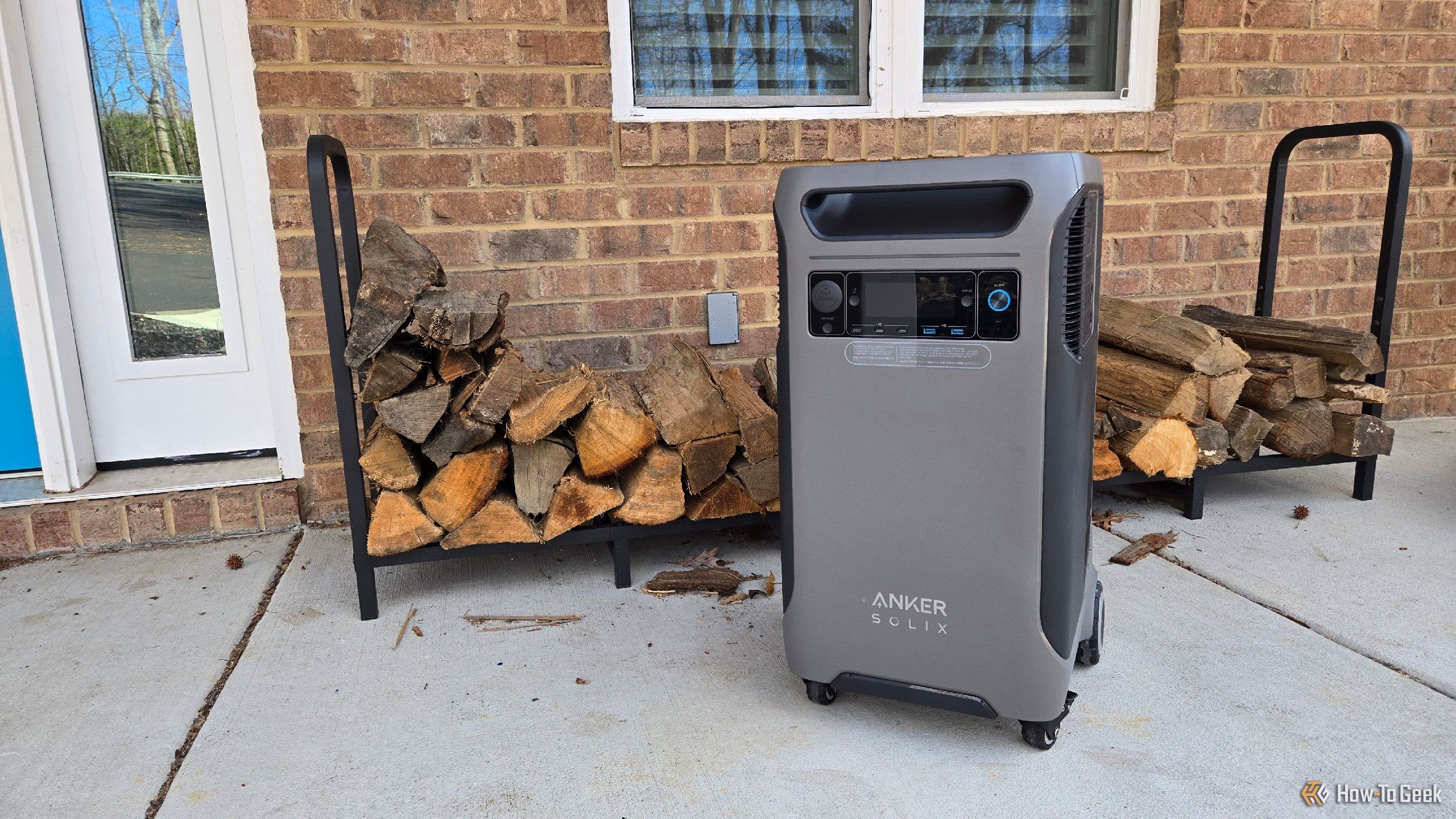
Instead of a Powerwall, I Backed My Home Up With Tons of Solar Generators
It wasn't cheap, but it was cheaper.
Is it a perfect system? There are trade-offs, just as there are no matter whether you go for a more expensive built-in battery, a cheaper DIY setup, or stick a propane tank outside your house. But by going this route, each new portable power station is essentially an expansion battery I can add to my home without having to call a contractor and deal with the added installation expenses.
With this modular approach, I can enjoy and take part in new models without the regret of committing to an older system. I look forward to watching our system grow.



